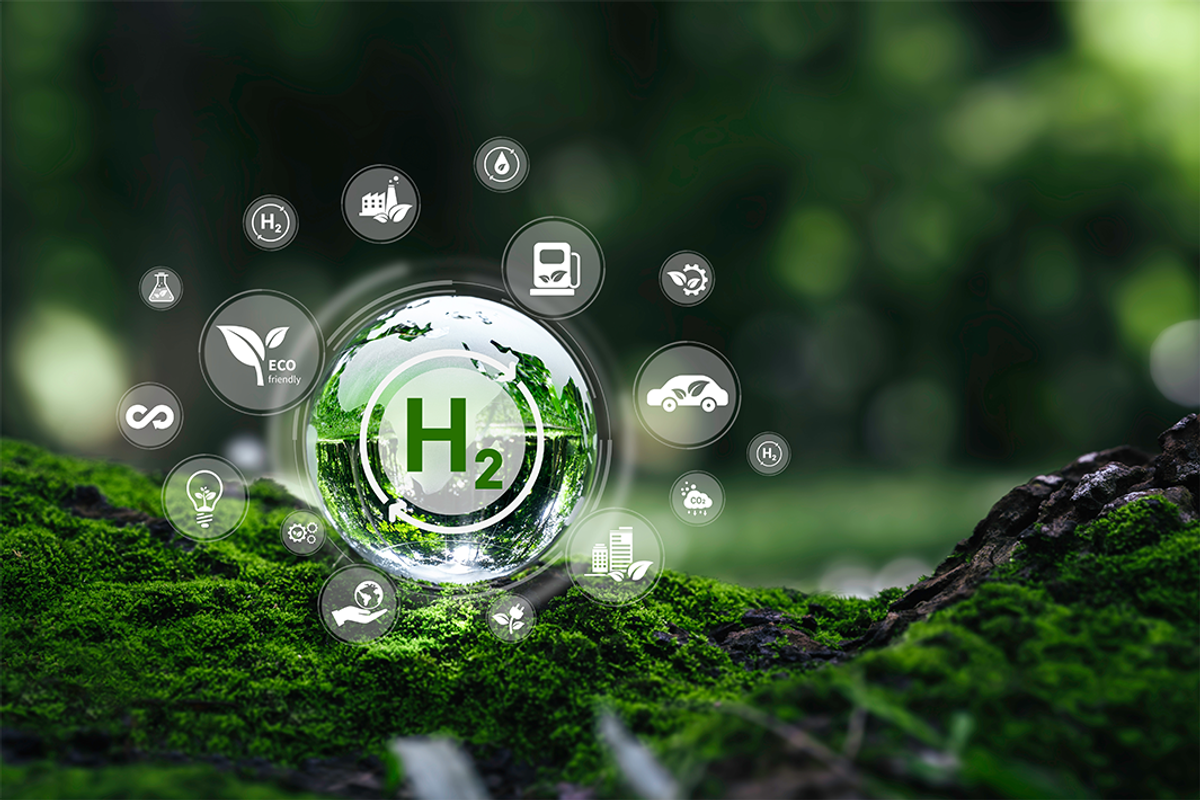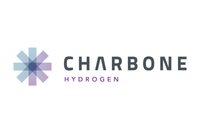
Green hydrogen is quickly emerging as a viable alternative in the global quest to decarbonize.
Green hydrogen is rapidly emerging as a reliable means of furthering the global quest toward decarbonization and the clean energy transition. For all its benefits, hydrogen energy has yet to achieve mainstream recognition — but investors in the clean energy space are slowly taking notice of its potential.
Gaining a deeper understanding of that potential — and of the resource itself — can help investors make better, more informed decisions when evaluating green hydrogen opportunities.
Hydrogen: An overview
Simultaneously the simplest and most abundant element on the planet, hydrogen comprises an estimated 75 percent of the mass in the known universe. Due to its chemical composition, the element is also uniquely suited for energy production and storage. Used extensively in industrial processes and as a component in rocket fuel, hydrogen has also emerged as a viable replacement for natural gasses such as methane.
To be usable for industry and energy, hydrogen must be refined into a liquid or a gas. In both cases, the end product of this refinement is known as dihydrogen, which in addition to fuel is also used for food packaging, as an antioxidant and as an electron donor. Dihydrogen may be produced through a multitude of production pathways, each represented by a color code.
- Blue hydrogen is primarily created by subjecting natural gas to superheated water in the form of steam. The process, known as steam reforming, produces both hydrogen and carbon dioxide. Blue hydrogen is often known as low-carbon hydrogen, as the carbon produced by the process is managed through carbon capture and storage (CCS) technology.
- Grey hydrogen is the most common source of hydrogen. It's created through steam reforming as with blue hydrogen, albeit without CCS. Typically, either methane or natural gas is used for this process.
- Black hydrogen and brown hydrogen are produced primarily from either black coal or brown coal, also known as lignite. The terms may also be used to describe hydrogen produced through the gasification of fossil fuels. This is the most environmentally damaging form of hydrogen production.
- Pink hydrogen is produced by nuclear-powered electrolysis. It may also be referred to as red hydrogen or purple hydrogen. The energy produced by nuclear reactors may also be used to produce other forms of hydrogen, such as blue or gray.
- Turquoise hydrogen is created through a relatively new process known as methane pyrolysis. When subjected to thermal decomposition, the natural gas produces hydrogen and solid carbon as byproducts. Although promising as a source of low-emission hydrogen, it's not yet known if this process is viable at scale.
- White hydrogen is a form of naturally occurring hydrogen created through fracking in underground deposits. It has yet to be leveraged in any capacity.
- Green hydrogen is made by using renewable energy to electrolyse water, splitting it into its base components. When green hydrogen is produced using solar energy, it may also be referred to as yellow hydrogen. Currently, this form of hydrogen represents only a small percentage of total production, as it is still relatively expensive to produce. This may soon change, however. Let’s explore why.
The burgeoning green hydrogen market
Green hydrogen presents many benefits, which include a significant reduction in emissions, more efficient energy storage, and the decarbonization of energy systems. Hydrogen is also an incredibly versatile resource. In addition to the aforementioned use cases, the element is also used to produce ammonia, create nylon, manufacture plastics, create flat glass and as a carrier gas in the fabrication of electronics.
Lastly, hydrogen can be produced virtually anywhere — meaning it's completely divorced from the supply chain challenges and concerns plaguing most other resources. By transitioning to hydrogen, countries have the potential to reduce their reliance on fossil fuels. Consequently, this allows them to improve both economic stability and energy security.
Green hydrogen production is not without its challenges, however. The resource requires specialized infrastructure for refinement, storage and distribution. Existing pipelines and transportation systems are not sufficient to fully expand green hydrogen’s potential. Hydrogen's low ignition point and high flammability can also make handling, storage and transportation of the resource incredibly dangerous without proper regulations and training.
These factors together mean hydrogen requires considerable investment to scale it to the point at which it could feasibly replace other energy and fuel sources. For context, PwC predicts hydrogen demand could reach up to 500 million metric tons per year by 2050. Clean hydrogen production capacity stands at roughly 11 million metric tons as of 2021.
The current market outlook for hydrogen is also promising. Globally, the market is expected to achieve a 39.5 percent compounded annual growth rate, reaching $60.56 billion by 2030. Production costs are also expected to drop 50 percent in the same timeframe then continue to steadily decrease until 2050.
Three companies making progress with green hydrogen
Several companies have already made considerable inroads in the production of green hydrogen, including some of the world's largest oil and gas corporations. Below, we've listed several of the most promising.
1. FuelCell Energy (NASDAQ:FCEL)
As the name suggests, FuelCell Energy designs, manufactures and operates environmentally friendly direct fuel cell power plants. With operations in over 50 countries around the world, the company also maintains several of the world's largest fuel cell parks. The company primarily produces green hydrogen from biogas and natural gas.
2. Adani Green Energy (NSE:ADANIGREEN)
Headquartered in India, Adani owns and operates one of the world's largest photovoltaic solar plants. A subsidiary of the Adani Group, the company produces green hydrogen by applying thermal reforming to hydrocarbon feedstocks. The company is playing a pivotal role in supporting India's transition to a net-zero economy.
3. Charbone Hydrogen (TSXV:CH,OTCQB:CHHYF,FWB:K47)
A green hydrogen group based in Canada, but servicing North America with a roadmap of 16 planned facilities by 2030, Charbone is the first company in Canada to produce green hydrogen and the first Canadian hydrogen producer listed on the TSX. Leveraging its hydroelectric assets and other renewable energy sources, the company is wholly committed to the production of clean hydrogen. Charbone is also founded and backed by energy specialists with decades of experience.
Charbone’s pipeline of new projects is paving the way for the company to become one of the leading producers of green dihydrogen in North America. The company stands to benefit from both the Canadian and US governments’ strategies to boost hydrogen production to aid with decarbonization goals.
Investor takeaway
Hydrogen has played an important role in multiple industrial and manufacturing processes for many years. Today, the element is quickly coming into its own as an essential building block for the clean energy transition. As we move inexorably closer to a more sustainable future, the market for green hydrogen will continue to grow — as will its value to investors.
This INNSpired article is sponsored by Charbone Hydrogen (TSXV:CH,OTCQB:CHHYF,FWB:K47) This INNSpired article provides information which was sourced by the Investing News Network (INN) and approved by Charbone Hydrogen in order to help investors learn more about the company. Charbone Hydrogen is a client of INN. The company’s campaign fees pay for INN to create and update this INNSpired article.
This INNSpired article was written according to INN editorial standards to educate investors.
INN does not provide investment advice and the information on this profile should not be considered a recommendation to buy or sell any security. INN does not endorse or recommend the business, products, services or securities of any company profiled.
The information contained here is for information purposes only and is not to be construed as an offer or solicitation for the sale or purchase of securities. Readers should conduct their own research for all information publicly available concerning the company. Prior to making any investment decision, it is recommended that readers consult directly with Charbone Hydrogen and seek advice from a qualified investment advisor.






